
by Angela Hinkle | Sep 3, 2019
Hurricane season is June 1 to November 30, with peak season in September and October. And hurricanes are not the only disasters we have to contend with. Living Well in the Panhandle provides the trusted Disaster Resources you need so you know what to do to keep your family and you living well.
Disaster Resources
Below are helpful resources for preparing for and handling the aftermath of a disaster. For more information, please contact your local UF/IFAS Extension Office.
Food Safety
Is My Food Safe to Eat?
Keeping Your Food Safe During Emergencies: Power Outages, Floods, and Fires
USDA – A Consumer’s Guide to Food Safety-Severe Storms and Hurricanes Guide
Well Water Safety
Well Water Testing
Housing
Search for an open emergency shelter near you by texting SHELTER and your zip code to 4FEMA (43362) Example: SHELTER 01234

Lightning storm. Photo Source: UF/IFAS
Cleaning Up After a Hurricane
Safety Comes First!
Get the Right Tree Care Professional
Hiring an Arborist – Spanish
Cleaning Mold After a Flood
Hurricanes and Mosquitoes
Mosquito Control Tips for Homeowners
Money Management/Consumer Issues
Avoiding Fraud and Deception
Six Steps in Making an Insurance Claim
Replacing Lost or Damaged Documents
FEMA – Individual Disaster Assistance
FEMA – Interim Housing Resources
USDA Farm Service Agency Disaster Assistance
Disaster Recovery Loans
Tax Relief After a Disaster
Complaints – If you have a complaint about disaster relief assistance, contact the Department of Homeland Security’s Inspector General’s Office at 1-800-323-8603.
Family Health and Wellness
Call the Disaster Distress Helpline 24/7 for free counseling – 1-800-985-5990 (TTY) 1-800-846-8517
OR text TalkWithUs to 66746
Mental Health for Adults
Mental Health for Kids
Mental Health for Adolescents
Agriculture and Natural Resources
Practices to Minimize Flooding Damage to Commercial Vegetable Production
Florida Panhandle Agriculture
Florida Panhandle Agriculture Facebook

by Samantha Kennedy | Aug 24, 2019
If you are anything like me, you pride yourself on keeping your kitchen safe and clean. Everything is tidy and in its place, there is no expired food in the pantry or refrigerator, and all the appliances are clean and free of debris.
But really. How clean is your kitchen? Out of curiosity, I recently graded the cleanliness of my kitchen using this handy checklist from Rutgers University. And while I received a pretty good grade, there were a few things I discovered I was not doing correctly. As a food safety instructor, I was ashamed of myself!
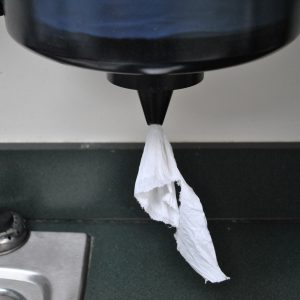
The safest and most sanitary way to dry your hands is with disposable paper towels. Never use a dishtowel for anything other than drying dishes. (Photo source: Samantha Kennedy)
The top five things I overlooked are:
- While the inside of my microwave oven was clean and free of debris, I failed to pay enough attention to the door. It was a little grubby. While it may not seem important to keep it clean since it does not come in contact with food, gunky buildup from food and other sources can harbor bacteria. Be sure to always keep the door clean!
- I have a bad habit of using the same dishtowel to dry my hands that I use for other functions in the kitchen. The best food safety practice is to either use paper towels to dry your hands or have a designated towel for hand drying. In fact, dishtowels should only be used to dry dishes, not to wipe down countertops or clean up spills.
- While I hate to admit it, I have sometimes resorted to thawing foods on the counter when I have realized that one of the ingredients for that night’s dinner is still in the freezer. THIS IS A VERY UNSAFE PRACTICE! Thawing foods at room temperature (i.e. on the counter) exposes foods to the Temperature Danger Zone, which can encourage the growth of pathogens. The Temperature Danger Zone is the range of temperatures between 41 and 135 degrees F. Keep cold foods below 41 degrees and hot foods above 135 degrees to reduce the risk of foodborne illness. There are only 4 acceptable methods to safely thaw foods:
- In the refrigerator.
- Under running water. (NOTE: The water temperature must always be less than 70 degrees F.)
- In the microwave. (NOTE: The food must be cooked immediately after thawing.)
- During the cooking process.
- I do not actually store a lot of leftovers. As a single person, I generally prepare small meals that can be eaten in one sitting. However, on those occasions when I do have leftovers, I do not always label them with the date. Leftovers stored in the freezer should be labeled with what it is and when it was put into the freezer. Refrigerated leftovers should not be kept longer than 7 days. Frozen leftovers should not be kept longer than 6 months.
- My cats are allowed in the kitchen and even on the countertops. While I always sanitize the surfaces before I prepare food, the best food safety practice is to prevent pets from coming into contact with countertops and other food contact surfaces.
How do you think your kitchen would fare? I encourage you to take a few minutes to grade your own kitchen to make sure you are doing everything you can to keep your kitchen as clean and sanitary as possible.
For more information about food and kitchen safety, please visit https://www.foodsafety.gov/.

by Stephanie Herzog | Jul 25, 2019
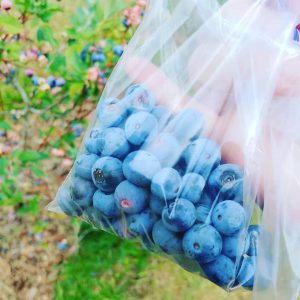
Eating fresh, local produce is a great way to be healthier, save money, and support the local economy. (Photo source: Stephanie Herzog)
Summer Local Eats – Supporting Farmers’ Markets
Summer is a great time of year to eat locally grown fresh produce! There are many options rich in a variety of colors, shapes, sizes, and nutrients. Farmers work hard to provide life-sustaining sustenance for society, and consumers supporting their efforts at the local level has an array of health and economic benefits.
Fresh summer crops in the panhandle abound. Produce that is ready this time of year includes peppers, cucumber, peanuts, okra, squash, corn, and watermelon. Spice up a summer salad with fresh cucumbers or peppers or try tasty yellow meat watermelon for a chill and nutritious summertime snack! Local, fresh produce is a healthy alternative to processed foods or produce found in grocery stores. Produce sold by local farmers is freshly picked and because you know where it comes from, it is both safer to eat and keeps for longer periods of time than grocery store produce, which often has traveled long distances, is seldom inspected, and is kept in storage before finally being put out on the floor for purchase.
Supporting your farmers’ market benefits both you and your community in many ways. Purchasing from local farmers and farmers’ markets is both financially sound for you and is supportive of the community’s economy – the money changes hands locally and creates and maintains jobs. Not only does it benefit the economy, it also fosters a stronger sense of community unity and trusted relationships, which is vital to any successful society and local economy. For example, farmers will sometimes offer a “u-pick” program, depending on the crop, where you go to their farm and pick what produce you want right from the field! You get to keep half, and the farmer keeps half. This is a great cooperative effort that benefits everyone – you get free, fresh produce, and the farmer gets free labor. Who doesn’t love a win-win scenario?
Jackson County farmers’ markets information. Residents in Jackson County have a wonderful farmers’ market in the heart of downtown Marianna, located at Madison Street Park (2881 Madison St.) that goes throughout the summer every Tuesday, Thursday, and Saturday morning from 7am-12pm. After September, the market will continue through the fall, winter, and spring each Saturday at the same time. Tuesday and Thursday have farmer vendors only, while Saturday includes a variety of vendors, such as arts and crafts, plants and flowers, jams, jellies, honey, etc. This market also offers a raffle when you purchase items from vendors! For any questions about the market or how to join as a vendor, visit their Facebook page or contact Tony Mayo, the current farmers’ market manager or Terry Johnson, the public relations manager for the market. His number is 850-592-5114. It’s a good idea to bring cash or checks, but some vendors do accept credit and debit cards.
Want to find a farmers’ market near you or learn more about the benefits and best practices shopping at a farmers’ market?
Come experience the buzz and benefits of the farmers’ market!
Sources:
Local farmers at the Marianna City Farmers’ Market
Wang, Q., Evans, E. A., Pikarsky, M., & Olczyk, T. Consuming local vegetables from our local growers. UF IFAS publication HS1251.

by jbreslawski | Jul 18, 2019
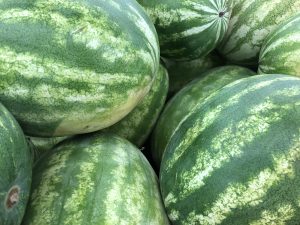
Photo source: UF/IFAS Northwest District
Have you noticed recently that there have been many sales on watermelon at your local grocery store and farmers’ markets and roadside stands have an abundant supply? That is because watermelon and July go together like peanut butter and jelly or bacon and eggs. This cool and refreshing fruit is now in season locally. Whether you like to spit seeds or prefer the seedless variety, this fruit is a healthy addition to your plate. Naturally low in sodium and calories, watermelon is an excellent source of vitamin A and can help keep you hydrated. It also is an excellent source of the antioxidant, lycopene (which gives the melon meat that pretty reddish-pink color). To select the best watermelon, look for one that is heavy for its size, has a uniform shape, and a dark, dull green color. A yellow spot on one side means that the fruit has been given time to ripen in the field and develop flavor.
Do not forget to give your watermelon a good rinse under cool water before slicing. Putting a knife through that melon can carry all of the bacteria from the rind and spread it onto the fruit. Since watermelon is not usually cooked, that means that bacteria will not be killed and you have a chance of getting a foodborne illness. Remember to do this with your cantaloupe and other melons too. Too much watermelon? Try serving watermelon in different ways like in a melon salad, or even in, or alongside, chicken salad. Watermelon should be refrigerated after being cut and can be frozen too. Use chunks of frozen watermelon in smoothies and other drinks too.
Here is a recipe for a bubbly, refreshing watermelon drink from Fresh From Florida to serve at your July picnic:
FLORIDA WATERMELON FIZZ
INGREDIENTS: 5 cups Florida watermelon (seeded and cubed); Florida honey, to taste; 2 cups sparkling water; one lemon, juiced; Fresh mint sprigs for garnish
PREPARATION: Add watermelon, honey, and lemon juice to a blender and process until smooth. Strain puree through a fine sieve or strainer. Fill four glasses with ice. Evenly distribute the strained juice into each glass. Top each glass with sparkling water and stir once. Garnish with fresh mint sprigs.
https://www.followfreshfromflorida.com/recipes/florida-watermelon-fizz/#

by Samantha Kennedy | Jul 2, 2019
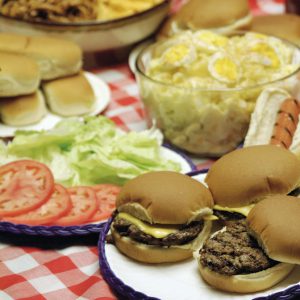
Picnics are a great way to share food and fun with friends and family. By following a few simple food safety tips, you can make sure foodborne illness doesn’t crash your party. (Photo source: UF/IFAS file photo)
There are few things more iconic during summer than a picnic. There’s just something fresh and fun about sharing a meal in the park or at the beach with family and friends. But just because you’re enjoying the warm, gentle breeze doesn’t mean you should throw caution to the wind. By following a few simple food safety tips, you can ensure that your perfectly planned picnic doesn’t make you sick.
Plan appropriately. Not all foods are picnic-appropriate. Anything that requires a lot of perishable ingredients and/or a lot of preparation should be avoided. Stick with foods that require little or no cooking and that contain just a few ingredients. Foods such as fruits and vegetables (especially whole ones), hard cheeses, peanut butter and jelly, cereal, bread, and crackers are ideal picnic items. Anything made with commercially processed custard or mayonnaise will stay safe as long as it is kept cold.
Pack it safely. Use a cooler, if possible, and store cold foods together so they can help each other stay colder longer. Use ice or frozen gel packs to help keep foods cold. Pack foods directly from the refrigerator into the cooler; don’t leave them sitting out before packing. Store ready-to-eat foods separately from raw meats. If packing up hot foods, be sure to keep them in a thermos or other insulated dish. DO NOT store them in the same container as the cold foods. Paper towels, disposable utensils, and a food thermometer are ideal picnic accessories. Remember, keep cold foods below 41 degrees F and hot foods above 135 degrees F. Do your best to keep the cooler away from direct sunlight by storing it in the shade and be sure to replenish the ice and/or frozen gel packs when they melt. If possible, store drinks in a separate cooler so cold foods are not exposed to warm air with frequent openings of the lid to retrieve drinks. This also reduces the risk of cross-contamination, with fewer hands reaching into the food cooler.
Prepare it carefully. All food items should be kept at the proper temperature at all times. When cooking raw meats, use separate plates for the raw and cooked products and clean and sanitize utensils between uses. Cook meat to the proper recommended internal temperature to ensure doneness and safety. Click here for a list of recommended internal cooking temperatures.
Clean up quickly. Discard any perishable foods that have been left out for longer than two hours. In really hot weather (generally above 90 degrees F), foods should not be left out longer than one hour. Keep food protected in storage containers such as coolers and lidded dishes to minimize contamination from flies and other pests. Serve small portions of food at a time and keep the rest in the cooler.
Picnics are an important part of summer and with just a little bit of planning and a few useful tips and tools, they can be safe and delicious for everyone!
Related links:
Food Safety at Tailgating (University of Florida/IFAS)
Picnic Safety (Iowa State University)
Checklist for the Perfect Summer Picnic (foodsafety.gov)
Extension classes are open to everyone regardless of race, creed, color, religion, age, disability, sex, sexual orientation, marital status, national origin, political opinions or affiliations.
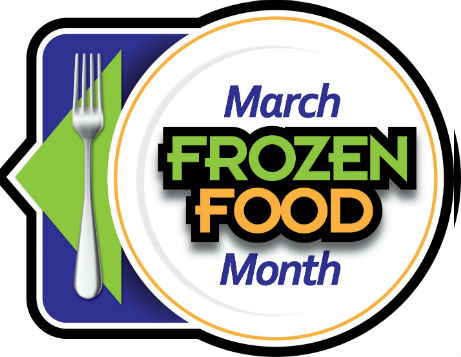
by Heidi Copeland | Feb 28, 2019
March is Frozen Food Month. In fact, the National Frozen & Refrigerated Foods Association (NFRA),Inc., likes to suggest that there is MEALTIME MAGIC in the FROZEN AISLE. I could not agree more!
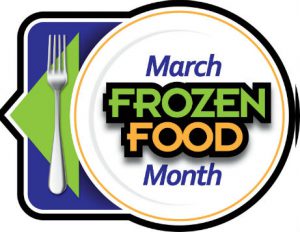
March is Frozen Food month. Photo Source: with permission from Frozen Food Alliance
Frozen foods are a smart choice. Frozen foods are always in season, last much longer than their fresh counterparts, are convenient, economical and full of variety. Plus, frozen foods can be portioned and packaged in ways that don’t leave anything to waste.
A lot has changed since 1925 when Clarence Birdseye was issued U.S. Patent #1,773,079, to freeze fish. This U.S. Patent marked the beginning of today’s frozen foods industry. In 1927, he extended the freezing process to quick-freezing meat, poultry, fruit, and vegetables. Birdseye’s initial introduction of 26 frozen foods has morphed to so many frozen products that the NFRA boasts over 3,700+ different choices. There is something FROZEN for every taste and every budget!
The modern day frozen product is generally supercooled at temperatures below -54°F. This supercooled fast freezing process produces smallish ice crystals that help foods retain their personal characteristics. Additionally, a lot of research goes into commercially frozen food’s packaging. Many frozen products can go directly from freezer to microwave, oven or even a pot of boiling water. Packaging must also consider the constraints of the home freezer knowing that its average temperature is around 0° or a bit below.
Although cold temperatures like 0°F or below puts a temporary hold on many biological processes microorganisms are not always killed off during freezing. It is important to recognize that proper care must be taken preparing some frozen foods.
In addition, when foods are frozen for extended periods of time or are frozen improperly, freezer burn can begin to develop on the food’s surface. Freezer burn happens when moisture in the outer layers of the food evaporates into the dry freezer air, leaving behind empty pockets in the tissue of the food. Freezer burn on meat is visible as brownish-white discolorations and on other foods dry, white spots. While it is not harmful to eat, freezer burn can adversely affect the flavor and texture of food.
It is easy to prevent freezer burn. One can easily reduce the food’s exposure to air through the use of correct wrap before storing food in the freezer. The National Center for Home Food Preservation (https://nchfp.uga.edu/how/freeze.html) has excellent information on how the use of proper packaging materials can protect the flavor, color, moisture content and nutritive value of foods from the arid climate of the freezer.
Frozen food packaging depends on the type of food to be frozen. In general, packaging materials must have certain characteristics:
- Moisture vapor resistant
- Durable and leakproof
- Not become brittle and crack at low temperatures
- Resistant to oil, grease or water
- Protect foods from absorption of off flavors or odors
- Easy to seal
- Easy to mark (with both content and date)
Additionally, a full freezer is the most energy efficient.
Posting a frozen foods inventory (list) near the freezer and keeping it up to date by listing the foods and dates of freezing is helpful. Remembering also to rotate foods in the freezer. An easy acronym for this is FIFO… First-In, First-Out. In other words, use the food stored the longest before you use the newest.
Moreover, purchase a thermometer if your freezer does not have an automatic temperature display. A freezer should be maintained at a temperature of 0°F or lower. At higher temperatures, foods lose quality much faster.
Most recently, a woman from North Carolina, Sheila Pulanco Russell, is credited with bringing a lifehack to the masses with her “how to” Facebook posting. I think it is a good thing to know. It is called the One Cup Tip. All it entails is putting a cup of water in the freezer, freezing it solid, and then placing a quarter on top of it and leaving it in the freezer.
When you return from an extended out of town trip you know if your power was out. It the quarter is sitting at the bottom of the cup you know your power was off too long and that your frozen food is not safe to eat. If the coin is in the middle of the cup, the outage was fairly short and your food should be good (frozen foods that still have their crystals are safe to eat and refreeze). If the coin is still on the top, then there was no power outage or just a quick one and all is well. Note: no one wants food poisoning, so if you are in doubt, throw the food out.
Have questions? Don’t hesitate to call your local county extension agent from the Cooperative Extension office; they’re free!
Heidi Copeland
Family and Consumer Sciences Extension Agent, III
University of Florida IFAS Extension
615 Paul Russell Road
Tallahassee, Florida 32301
hbc@ufl.edu
(850) 606-5203
The Foundation for The Gator Nation
An Equal Opportunity Institution












